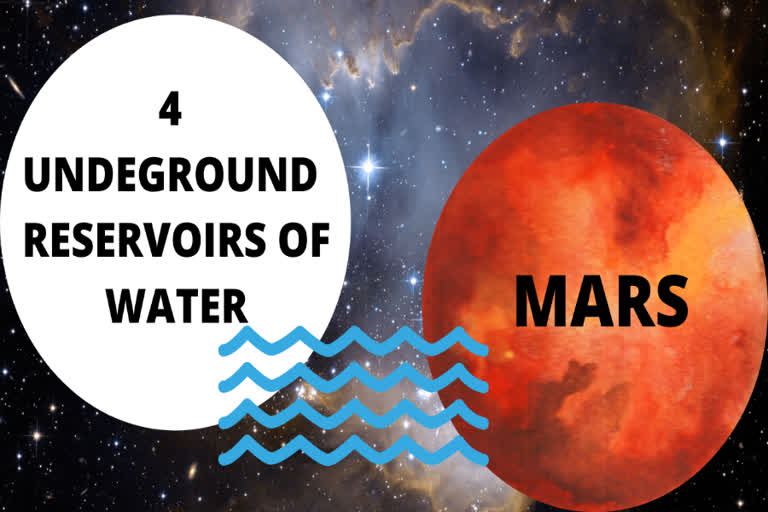MIT Technology Review, USA: The background: In 2018, a group of Italian researchers used radar observations made by the European Space Agency’s Mars Express orbiter to detect a lake of liquid water sitting 1.5 kilometers below the surface of Mars. The lake, which was about 20 kilometers long, was found near the south pole, at the base of an area of thick glacial ice called the South Polar Layered Deposits. Those radar observations were made by an instrument called Mars Advanced Radar for Subsurface and Ionosphere Sounding (MARSIS).
The new study: Two years later, after a new analysis of the complete MARSIS data set (composing over 134 radar collection campaigns), members of that same team have confirmed the presence of that body of water. But they have also found evidence of three others, each less than 50 kilometers away from the location of the first. The new analysis applies lessons learned in discriminating between wet and dry subglacial conditions in radar data for Antarctica and Greenland.
The newly discovered patches of water don’t seem to be much different from the one found in 2018. They range from an estimated 10 to 30 kilometers in length. They all start at a depth of about 1.5 kilometers underground, although it’s still unknown how deep any of them actually run.
Also Read: Apple and Google have launched coronavirus exposure notifications without an app
The water: Don’t expect to be able to drink this water. The only reason it’s been able to stay liquid despite frigid temperatures on Mars is that it’s likely very briny (or salty). Salts can significantly lower the freezing point of water. Calcium, magnesium, sodium, and other salt deposits are found globally on Mars, and previous experiments suggest that brines can easily form in subpolar regions there. It’s plausible they’ve allowed these lakes to remain stable over potentially billions of years.
So what? Access to water is going to be a big deal for future Martian colonists. But even if this water could be desalinated, accessing it would require intense drilling. There’s plenty more surface ice at the Martian poles that are much easier to harvest.
Instead, the most exciting thing about these underground lakes is that they could be home to extraterrestrial life. It’s possible that just like on Earth, some microbial life has evolved to withstand the extreme conditions of these salty subglacial lakes and made a home for itself.
The best way to investigate this further is to directly study the waters. Elena Pettinelli, a physicist at Roma Tre University in Rome and a coauthor of the new study, says a lander or rover platform would be best suited to this task. The biggest problem, of course, is getting to those depths. One way around the issue could be to measure seismic activity, which could shed light on the full depth and geometry of the water bodies and shed some light on which parts are most likely to habitable. But seismic observations would still fall very short of telling us anything definitive about whether life exists on Mars.
Copyright 2020 Technology Review, Inc.
Distributed by Tribune Content Agency, LLC
Also Read: OpenAI is giving Microsoft exclusive access to its GPT-3 language model



